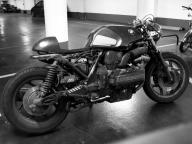-
Număr conținut
1.222 -
Înregistrat
-
Ultima Vizită
Tip conținut
Profiluri
Forumuri
Calendar
Orice postat de Gogule
-
procedura de 'idle drop' este putin mai complexa de atat...plus ca iti trebuie un turometru digital care sa arate schimbari mai mici de 50 rpm.....
-
cumpara kit de reconditionare de la romimoto. mai am la vanzare disc spate 'dantelat' folosit 2000 de km, pret 100 lei, se potriveste la gsxf 600-750 pana in '97! si scarita pilot+suport pentru gsxf 750 pana in '97, pret 80 de lei!
- 3.020 răspunsuri
-
- suzuki gsx 750f
- gsxf750
-
(și 2 alții)
Setat cu taguri:
-
Jantele ar merge vopsite electrostatic negru sau dupa preferinte! Spor la treaba!
-
si dupa electroliza poti folosi POR15!
-

Suzuki DR 600/650/ Big 750/800
topic a răspuns lui Gogule în sebi drul Totul despre motocicletele de enduro touring & adventure
@Ivanica: este vorba de 0,08mm-0,13mm.....si nu iti trebuie decat un set de lere,nu vreun 'fir de par' ! in legatura cu jocul, oriunde intre 0.08-0.13 este ok, eu personal prefer sa las jocuri mai maricele, (de ex aici spre 0.13) mai ales la supapele de evacuare, chiar daca motorul e mai galagios.... -

Virago xv 700 rateuri in frana de motor...
topic a răspuns lui Gogule în gabyungureanuul Service si intretinere curenta
@TNG -daca nu te superi, care a fost problema Shadow-ului? sau cum ai rezolvat problema? multumesc! -

Probleme dupa ce am scapat motocicleta
topic a răspuns lui Gogule în nutrețul Service si intretinere curenta
Verifica daca are 'bank angle senzor'. -

Virago xv 700 rateuri in frana de motor...
topic a răspuns lui Gogule în gabyungureanuul Service si intretinere curenta
Ca fapt divers am renuntat sa mai caut solutia si am cautat o cale de mijloc:am 'ameliorat' rateurile marind nivelul in carburatoare (dar nu atat incat sa afecteze functionarea motorului) si schimband toate garniturile evacuarii! La Transalp se numesc 'air cut off-valve' si pe decelerare inchid aerul, sau la honda cbr f4 imbogatesc amestecul din cate imi amintesc! -

Virago xv 700 rateuri in frana de motor...
topic a răspuns lui Gogule în gabyungureanuul Service si intretinere curenta
Unii sustin ca este absolut normal, si tind sa le dau dreptate, deoarece cand am reusit sa elimin complet rateurile, amestecul carburant devenise mult prea bogat la ralanti! Burn Baby Burn The last thing I want to address today is the subject of deceleration backfire, or “popping”. This topic generates a lot of concern from inexperienced riders, or even from experienced guys who just hate the noise, so lets take a look at what causes it. But first things first, lets define the issue: Deceleration Backfire is caused by fuel burning in the exhaust manifold or header. No ifs ands or buts, that’s what causes it. But the bigger question is how does gas get there in the first place, and that’s a bit more complicated. Generally, there are a variety of ways it gets there, and a variety of things that can make the backfiring worse. But there’s a kicker, and something you should understand before we go any farther: A motor in perfect tune will exhibit deceleration backfiring. Therefore, just because your motor is banging it up, doesn’t mean there’s anything wrong. And consequently: Getting rid of the noise means de-tuning your motor. Yup. If you’ve jut got to eliminate that popping, you’ll have to accept the fact that your motor is going to be forced to run rich to do it, and that isn’t necessarily a good thing. So lets talk about what causes the problem. Ok, so you’re riding along at some given rpm, and suddenly you decide to decelerate, and you reduce the amount of throttle. This causes an “overrun” – that is, the motors rpm is turning faster than the fuel provided can support, so the motor begins to spool down. This causes a couple of things to happen. First, when you close the throttle, you are also closing the throttle plates. This reduces the air and fuel flowing into the motor, and increases the vacuum (lowers the pressure). This results in less air and fuel in the cylinder during the power stroke, which in turn results in a lower pressure in the combustion chamber. Remember I said earlier, that the A/F mix burns faster in proportion to the pressure applied? Well, when we reduce pressure this way, the mix burns slower. This results in two things happening. 1. The lower burning fuel generates less heat, and the cooling effect of the non-burning fuel tends to “quench” the flame front, or slow it down even further. Because the mix is burning much slower, the exhaust valve can open before all the fuel is consumed, and the unburnt fuel is ejected into the exhaust. 2. The engine designers, in order to promote smoother idling and better combustion, retard the spark when the throttle is shut, and this results in the mix being lit later. So, now we end up with unburnt fuel in the exhaust, and burning fuel being ejected into the exhaust, and bang! Backfire. In addition, Honda has added a device called a “programmed air injection valve” (Pair Valve) that actually injects some fresh air into the exhaust to help this process along – since fully burning the fuel results in cleaner exhaust. So the backfiring is not only a normal part of the engines operation, it’s also intentionally amplified by Honda! Of course, normally, that massive bazooka pipe Honda hangs on your bike hides most of the noise, but it’s there, even when you can’t hear it. So the bottom line, is: That backfiring is perfectly normal and expected. If you’ve just got get rid of it, that’s up to you. You’re entitled to set your motor up the way you want, and your goals are your goals. But don’t refer to it as “fixing” the popping. Rather, the correct way to think of it is “de-tuning a bit to get rid of the popping”. There are a few ways you can do this. First, use the stock pipe. It will hide the sound, by absorbing it into mass, and masking it with the larger baffle space. Second, you can add more fuel during deceleration. This has the effect of raising the chamber pressure slightly, which burns a little more before the exhaust valve opens. Lastly, you can remove the Pair valve, which reduces the amount of available oxygen in the pipe to burn the unburnt fuel. -

Virago xv 700 rateuri in frana de motor...
topic a răspuns lui Gogule în gabyungureanuul Service si intretinere curenta
se refera la raportul benzina-aer: bogat-mai multa benzina decat 'ideal', sarac-mai mult aer decat 'ideal'! dar asta nu e neaparat o defectiune sau reglaj al carburatiei ci un efect secundar al montarii unui esapament sport, al neetanseitatii evacuarii, etc , iar ca rezolvare: imbogatirea amestecului la ralanti si incercarea de a etansa tot esapamentul! -

Virago xv 700 rateuri in frana de motor...
topic a răspuns lui Gogule în gabyungureanuul Service si intretinere curenta
poti sa ii imboagatesti amestecul la ralanti, si rateurile vor scadea in intensitate! daca ai esapamentul etansat perfect pot disparea total, dar depinde cat de 'liber' este esapamentul cat si lungimea acestuia conteaza! eu am reusit sa elimin la gsxf rateurile cu un jigler de ralanti un nr mai mare, dar deja amestecul deja era prea bogat! banuiesc ca esapamentul nu este etans perfect! -

Virago xv 700 rateuri in frana de motor...
topic a răspuns lui Gogule în gabyungureanuul Service si intretinere curenta
Daca are tobe 'modificate' poti incerca sa deschizi o jumatate de tura suruburile 'pilot'. Nu va rezolva definitiv problema, dar se va ameliora! Daca esapamentul nu e etans, efectul este acelasi:rateuri in frana de motor! -
Relantiul ce 'agata' inseamna amestec 'sarac'. Verifica 'pilotjet-uri' sa nu fie 'infundate,' membranele, porturile de sincronizare, admisiile sa fie etanse....si cablul de acceleratie sa nu 'agate'!
-

Uleiul potrivit pt. motor racit pe aer
topic a răspuns lui Gogule în dj.martenul Service si intretinere curenta
si eu am patit faza cu evaporatul, dar la motul 7100 bagat in motoare racite pe ulei-aer in timpul verii... -

Uleiul potrivit pt. motor racit pe aer
topic a răspuns lui Gogule în dj.martenul Service si intretinere curenta
cauta un ulei 10w50.... -

Kawasaki KLE 500 - totul despre
topic a răspuns lui Gogule în McKaganul Totul despre motocicletele de enduro touring & adventure
Un amic posesor de kle 500 din '91 are 'mare' nevoie de un rotor...pana acum am gasit doar nou la 190 de euro..... stiti cumva vreo 'sursa' mai ieftina? -
-

ANTIGEL - Totul despre Tipuri/Clase/Comparatii
topic a răspuns lui Gogule în yamahaiaul Service si intretinere curenta
De obicei folosesc HEPU....dar am folosit la vitezane si antigel romanesc la 8 lei litrul....daca il schimbi la 2 ani...- 582 răspunsuri
-
- antigel
- trebuie schimbat?
-
(și 3 alții)
Setat cu taguri:
-

reglare nivel benzina carburator yamaha xj600 an 98
topic a răspuns lui Gogule în justme2009ul Service si intretinere curenta
Plutitoarele cu sistemul lor de 'parghii' se mai deformeaza in timp, de acolo apar diferente intre nivelul de benzina si inaltimea plutitoarelor! -

reglare nivel benzina carburator yamaha xj600 an 98
topic a răspuns lui Gogule în justme2009ul Service si intretinere curenta
Performance solution se refera la inaltimea plutitoarelor, cred..... -

reglare nivel benzina carburator yamaha xj600 an 98
topic a răspuns lui Gogule în justme2009ul Service si intretinere curenta
Este mai important sa verifici nivelul de benzina decat inaltimea plutitoarelor....da, zice clar sa masori distanta dintre linia unde se imbina corpul carburatorului si camera de nivel....dar 8,8-10,8 mm am impresia ca este inaltimea plutitoarelor! -
Si daca nu e 'asea'?! Exup (exap cum zici tu, denumire data de Yamaha) se foloseste la motoarele in 4 timpi! Rs-ul nu e cumva in 2 timpi?!
-

Sunet ciudat peste 5000 rpm
topic a răspuns lui Gogule în Danysendaul Service si intretinere curenta
Turometrul este pe cablu sau electronic?! am patit asta cu vitezometrul la o comunista, cum treceam de 70km/h facea cam acelasi zgomot..... -

problema acceleratie suzuki.
topic a răspuns lui Gogule în pytmariusul Service si intretinere curenta
'Decarbusolv' sau gasesti spray de curatat carburatoare! dar sa desfaci tot ce este cauciuc din carburatoare (membrane, o-ring-uri)! -
Essadbey- felicitari, arata f bine.....totusi si eu vreau sa vad cum va arata cea cu rezervorul aerografiat.... Dar de asta ce ziceti?!
- 1.505 răspunsuri
-
- cafe racer yamaha xs400
- ????????
- (și 7 alții)


